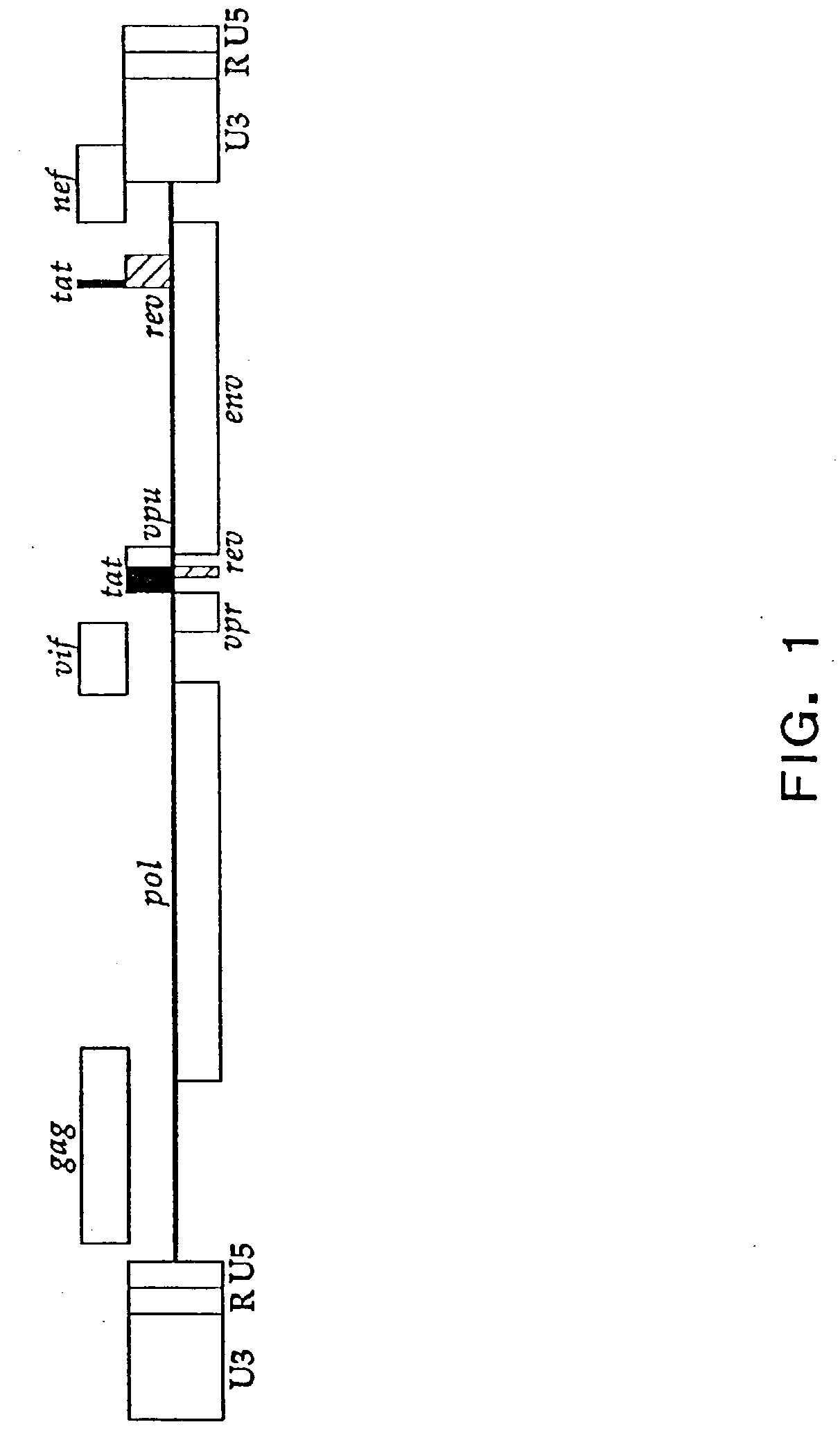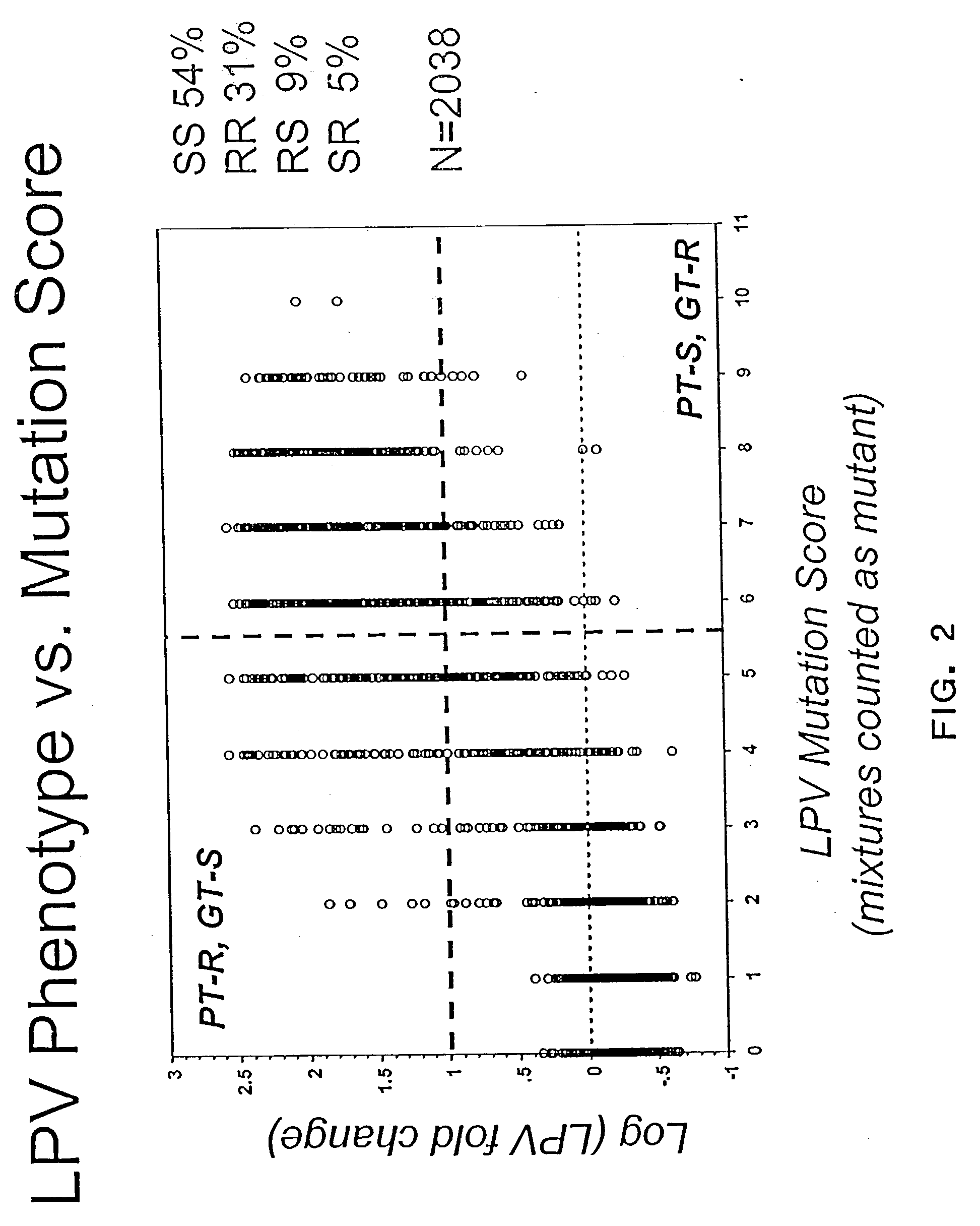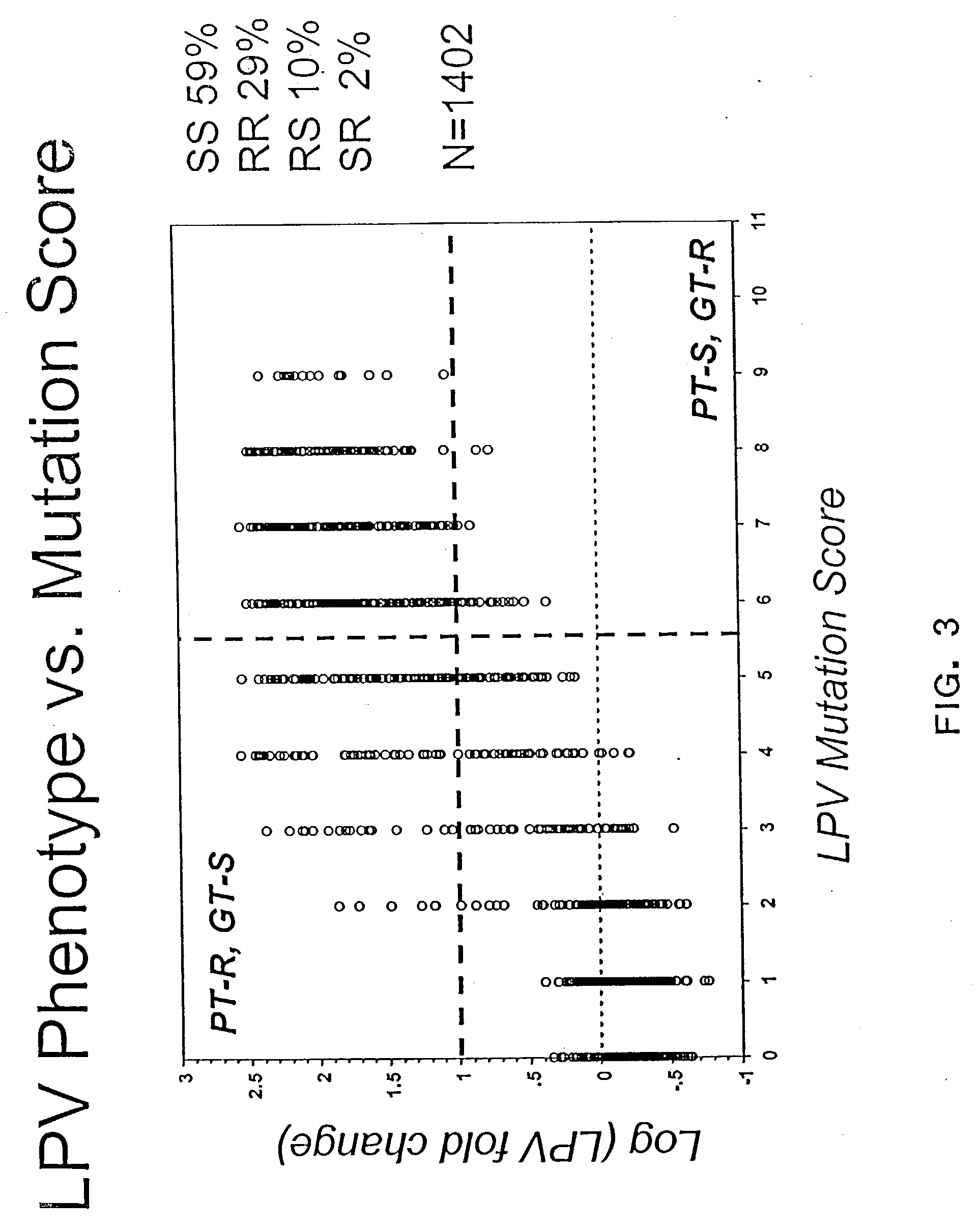Compositions and methods for determining the susceptibility of a pathogenic virus to protease inhibitors
a technology of protease inhibitors and compounds, applied in the field of compositions and methods for determining the susceptibility of a pathogenic virus to an antiviral compound, can solve the problems of considerable time and money, and achieve the effect of improving the quality of life of a patient, and no improvemen
- Summary
- Abstract
- Description
- Claims
- Application Information
AI Technical Summary
Benefits of technology
Problems solved by technology
Method used
Image
Examples
example 1
6.1 Example 1
Analysis of Patient Samples to Identify Resistance-Associated Mutations
[0197] This example demonstrates a method of analyzing patient samples so as to identify mutations that are associated either with increased or with decreased susceptibility to protease inhibitors such as lopinavir.
[0198] In order to determine the relationship between an HIV-1 strain's protease sequence and its susceptibility to treatment with lopinavir, a training data set of 2038 patient plasma samples was analyzed genotypically as well as phenotypically. The phenotypic assay was conducted using the PHENOSENSE.TM. (Virologic, South San Francisco, Calif.) HIV assay (Petropoulos et al., 2000, Antimicrob. Agents Chemother. 44:920-928; U.S. Pat. Nos. 5,837,464 and 6,242,187). Plasma samples were collected from HIV-1-infected patients. Repeat samples from the same patient were removed to prevent possible bias resulting from unique combinations of mutations. IC.sub.50 values for lopinavir were obtained f...
example 2
6.2 Example 2
Correlation of Lopinavir Susceptibility to Number of Mutations in HIV-1 Protease
[0200] This example demonstrates that a simple algorithm that correlates the number of equally-weighted mutations in the protease gene of an HIV-1 with its susceptibility to lopinavir is inaccurate.
[0201] A data set of 2038 patient plasma samples was analyzed and mutations associated with reduced susceptibility to lopinavir were identified, as described in Example 1. The phenotypic susceptibility to lopinavir (lopinavir fold change) was analysed as a function of the number of mutations in the protease of the HIV-1 present in a patient's plasma sample. The fold change for each sample was calculated by dividing the IC.sub.50 of lopinavir against the HIV-1 from the patient's plasma sample by the IC.sub.50 for lopinavir against the NL4-3 (GenBank Accession No. AF324493) reference viral strain. The genotype data was obtained by sequencing the protease of the HIV-1 present in each patient's sample...
example 3
6.3 Example 3
Reducing the Size of the PT-S, GT-R Discordant Group
[0205] This example demonstrates that the PT-S, GT-R data seen in FIG. 2 can be accounted for by the presence of samples containing mixtures of amino acids in at least one lopinavir resistance-associated position.
[0206] Using the simple algorithm of Example 2 produced approximately 9% results in the top, left ("PT-R, GT-S") quadrant and 5% results in the bottom, right ("PT-S, GT-R") quadrant (FIG. 2). These discordant results could be attributed, at least in part, to patients' samples that contained a mixture of viral strains with proteases that had a mixture of amino acid residues at one or more positions associated with reduced susceptibility to lopinavir. When these samples (i.e. those samples that contained a mixture of both, a wild-type and a mutant) were excluded from the analysis, the PT-S, GT-R results decreased to 2% whereas the number of PT-R, GT-S results stayed about the same at 10% (FIG. 3). 1402 samples w...
PUM
| Property | Measurement | Unit |
|---|---|---|
| Fraction | aaaaa | aaaaa |
| Fraction | aaaaa | aaaaa |
| Fraction | aaaaa | aaaaa |
Abstract
Description
Claims
Application Information
 Login to View More
Login to View More - R&D
- Intellectual Property
- Life Sciences
- Materials
- Tech Scout
- Unparalleled Data Quality
- Higher Quality Content
- 60% Fewer Hallucinations
Browse by: Latest US Patents, China's latest patents, Technical Efficacy Thesaurus, Application Domain, Technology Topic, Popular Technical Reports.
© 2025 PatSnap. All rights reserved.Legal|Privacy policy|Modern Slavery Act Transparency Statement|Sitemap|About US| Contact US: help@patsnap.com



